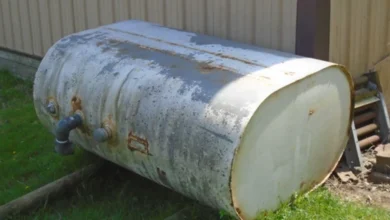Filament Dry Cabinet: How Does it Work? (Benefits and Alternatives)

You might have heard about the harmful effects that moisture can have on your 3D printer filaments. No matter how expensive your filaments may be or the high-quality technology of your printer, if you use filaments like PETG or Nylon, they will absorb moisture within a matter of hours. That is where filament dry cabinets come in.
These cabinets are designed to address the issue of moisture, preventing your 3D printing materials from absorbing water and thereby affecting your results. But how do filament dry cabinets work? Are they worth the investment, and most of all, is there any alternative to them?
Let’s find out.
What Exactly is a Filament Dry Cabinet?
In many countries during the summers, there is humidity that makes it quite impossible for you to print the right object without it causing issues like stringing, blobbing, and others. So, to cater to that issue, a filament dry cabinet is a great solution because it is a temperature and humidity-controlled storage box that is designed to keep your filaments at the right temperature.
Aside from temperature, the most important aspect of a dry cabinet is how it controls humidity, not allowing moisture to be absorbed by the filaments. Unlike simple boxes, these cabinets can actively regulate the humidity levels and even heat, sometimes using built-in technology.
Many professionals and industrial 3D printing setups use cabinets where materials like PLA, Nylon, and PETG are stored efficiently to handle and maintain the right quality.
How Does it Work?
So, how does a filament dry cabinet actually work? By putting a few key components together, a dry cabinet is successfully working. This includes the following features/items/technologies.
- Dehumidification System: Many cabinets will use either desiccant wheels or other cooling systems to remove moisture from the air inside the cabinets. If you get a higher-quality filament dry cabinet, you will notice that you can run it 24/7 without much maintenance, and your products will stay safe and effective for work.
- Humidity Sensor: The most important part of a dry box is the humidity sensor, and as soon as humidity reaches a certain level, it triggers the drying mechanism. Most cabinets can maintain the RH element to below 15%, which works for most filaments.
- Sealed Environment: The filament drying cabinets are also made of airtight seals so that they can not only block out external moisture but also UV light. UV light is one of the biggest causes of filaments getting destroyed.
Some drying cabinets also come with a heating element that lets you keep a stable temperature, but it only comes in a premium package most of the time.
Filament Dry Cabinet vs Filament Dryer
While both sound similar, there is a difference between a filament dryer and a dry cabinet. Most filament dry cabinets cannot dry filament completely, but they can maintain the temperature. However, talking about the high-end ones, they do have better efficiency and can even have drying effects.
In general, a cabinet focuses more on storage and humidity control, but not high-speed drying. That is where a filament dryer comes in. A filament dryer’s main task is to act as an active dehumidifier while making sure that your filaments will maintain the right temperature.
One of the best examples of a filament dryer is the Chitu Systems FilaPartner E1 that can easily run at higher temperatures of between 50°C and 70°C. This involves high-speed drying that most filament dry cabinets cannot provide.
If you already have a filament dryer, then you can use the combo strategy two. A dryer and a cabinet can go hand in hand because the dryer will restore your old spools with moisture damage, and then you can transfer them into a dry cabinet for long-term protection.
However, some spools are already affected beyond repair, so you need to make sure that they are recoverable.
Should You Buy a Filament Dry Cabinet?
There are several reasons you might want to consider buying a filament dry cabinet. Here are some of them:
- Filament Choice: If you are working with filaments that absorb moisture quickly, then a dry cabinet would be the perfect solution for you. Filaments like Nylon or TPU will gain the most benefit out of a dry cabinet.
- Multiple Spools: As a filament dry cabinet stores multiple spools at once, if you are someone who does multi-color printing or wants to use multiple filaments, then the dry cabinet will keep them ready to use at any time.
- Humid Environment: Many countries can get humid weather that increases the chances of moisture being sucked up by the filaments. For these areas, it is quite important to protect the filaments, and one of the best ways is to get a filament dry cabinet.
If you have any of these three or multiple points related to you, then yes, you do need a dry cabinet. However, if you are a casual hobbyist or someone who has just come into the world of 3D printing, then using a Filament Dryer will be enough for you in a cost-effective way.
If you don’t have lots of different filaments to be used often, then you don’t need a dry cabinet.
But if you want a consistent storage solution and drying, then it is one of the best options for you.
Final Verdict
A filament dry cabinet is one of the ultimate solutions to keeping your filament safe and ready for disposal. It is used mostly for professional and high-volume environments and can save a lot of time and money in the long run.
If you’re looking for other 3D printer accessories, then check out Chitu Systems and their wide range of products.





